Irish Folklore Stories from Ireland’s Past
Irish folklore stories and Irish mythology tales have been told for centuries, passed down through generations, and woven into the fabric of Ireland’s cultural identity.
From heroic warriors to magical creatures, these tales capture the imagination and speak to universal themes of love, bravery, wisdom, and sacrifice. They are filled with moments of magic and mystery, where the natural and supernatural worlds intertwine.
In Ireland, storytelling has always been an important way to keep history, tradition, and lessons alive. Whether gathered around the fire or passed through oral tradition, these Irish folklore stories have survived the test of time, giving us a glimpse into Ireland’s ancient past.
These Irish folklore stories remind us of the strength of the human spirit, the beauty of nature, and the mysterious forces that shape our world.
In this article, we will journey through Irish Folklore stories. We will take a look at the most famous Irish myths and legends, exploring the epic battles of heroes like Cú Chulainn, the enchanting land of Tír na Nóg, the eerie calls of the Banshee, and the mischievous tricks of the Leprechaun.
These Irish folkore stories not only entertain, but they also hold timeless lessons that resonate with us today. So, please sit back, and let’s dive into the magical world of Irish folklore.
Table of Contents
Irish Folktale Stories: Irish Heroes and Warriors
The Cattle Raid of Cooley (Táin Bó Cúailnge)
The Cattle Raid of Cooley, known in Irish as Táin Bó Cúailnge, is one of the most famous tales in Irish mythology and a centrepiece of the Ulster Cycle. This epic story revolves around Queen Medb of Connacht and her desire to claim a prized brown bull from the region of Cooley in Ulster.
Medb wanted the bull to match her husband’s wealth, King Ailill, who owned an equally valuable white bull. Determined to steal the bull, Medb raises an army to march on Ulster and take it by force.
However, the men of Ulster are struck by a mysterious curse that leaves them unable to fight—except for one young warrior, Cú Chulainn. Cú Chulainn, often considered Ireland’s greatest hero, single-handedly defends Ulster against Medb’s army.
Armed with his mighty spear and incredible combat skills, he fights in a series of intense battles, even resorting to the terrifying ríastrad, or “warp spasm,” where he transforms into an unstoppable force of destruction.
Cú Chulainn’s bravery and unmatched strength make him a central figure in the Ulster Cycle, a collection of stories that focus on the heroes and rulers of Ulster. His battle to defend Ulster from Medb’s forces is more than just a fight over a bull—it represents the themes of honour, loyalty, and heroism that are key to Irish mythology.
The Táin Bó Cúailnge is an action-packed saga reflecting the importance of status, power, and pride in ancient Ireland. It showcases how far people were willing to go to protect their land and reputation. Today, this tale remains one of the most celebrated in Irish folklore, highlighting the drama of war and the heroism of those who rise to defend their people.
Read the full story of The Cattle Raid of Cooley.
The Story of Cú Chulainn
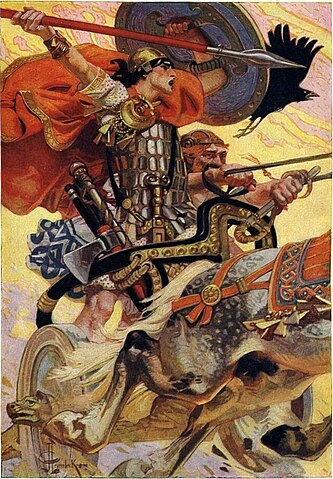
Cú Chulainn is one of the most legendary heroes in Irish folklore, known for his incredible strength, bravery, and supernatural abilities. His story begins even before his birth, with prophecies that he would become the greatest warrior in Ireland but that his life would be short and violent.
Cú Chulainn was originally named Sétanta, and he was the son of the God Lugh of the Longarm and a mortal woman, Deichtine. His famous name came from a childhood incident when he killed the fierce guard dog of a local blacksmith named Culann. To make up for it, the young Sétanta offered to guard Culann’s house until a new dog could be trained, earning him the name Cú Chulainn, which means “the Hound of Culann.”
As he grew, Cú Chulainn’s strength and combat skills became legendary. By the time he was a teenager, he was already an unstoppable warrior, training with the greatest fighters in Ireland and beyond. What truly set him apart, however, was his ability to enter the terrifying state of ríastrad, also known as the “warp spasm.” His body would twist and contort unnaturally during this transformation, turning him into a monstrous, uncontrollable force of destruction. In this state, Cú Chulainn could defeat entire armies on his own.
One of the most famous moments in Cú Chulainn’s life is during the Cattle Raid of Cooley, where he single-handedly defended Ulster from Queen Medb’s army. Though just one warrior, his extraordinary abilities allowed him to hold off Medb’s forces, earning him a place as Ireland’s greatest hero.
Cú Chulainn’s story is filled with epic battles, feats of strength, and moments of glory and tragedy. His supernatural abilities, including the ríastrad, made him an unmatched warrior. Still, his life was also marked by loneliness and a sense of doom, as he always knew his heroic path would lead to an early death. Today, Cú Chulainn remains a symbol of bravery, heroism, and the warrior spirit in Irish folklore.
Read the story of the Birth of Cú Chulainn and Cú Chulainns death.
The Labors of Cú Roí
While Cú Chulainn is one of the most well-known figures in Irish folklore, another mighty and intriguing warrior from the exact legends is Cú Roí, a king and a shape-shifting sorcerer with incredible magical abilities. Cú Roí, though less famous than Cú Chulainn, plays a significant role in several stories within the Ulster Cycle.
Cú Roí was a mysterious figure known for his wisdom, strength, and ability to change shape at will. He lived in a fortress that could spin around, making it impossible for enemies to find its entrance. He was often depicted as a judge and a challenger in competitions of strength and skill, particularly with Ireland’s greatest heroes.
The Contest of Champions is one of the most famous stories involving Cú Roí. This competition involved several of Ireland’s finest warriors, including Cú Chulainn. In this contest, Cú Roí judged the heroes’ abilities as they performed various feats of strength and bravery. However, the most dramatic part of the contest came when Cú Roí challenged the warriors to a test of loyalty and courage.
Cú Roí offered the warriors a deal: he would allow them to behead him, but in return, they had to let him behead them the next day. Many warriors hesitated when it was their turn to fulfil the bargain. Still, Cú Chulainn, showing his unmatched bravery, kept his word. When Cú Roí returned the following day to take his turn, he spared Cú Chulainn’s life, impressed by his honour and courage.
Despite being a lesser-known character, Cú Roí represents Irish folklore’s’ magical and mysterious side. His ability to shape-shift and his sense of justice made him a respected, though often feared, figure in these ancient tales. The stories of his contests with Cú Chulainn and other warriors show the importance of themes like honour, loyalty, and courage in Irish legends.
Journeys and Otherworldly Adventures
The Voyage of the Brendan (Navigatio Sancti Brendani)
The Voyage of St. Brendan, also known as Navigatio Sancti Brendani, is one of Irish Christian mythology’s most famous and adventurous tales. St. Brendan, a monk born in the 5th century, is said to have embarked on an extraordinary sea voyage in search of the Promised Land of the Saints, a paradise across the western ocean. His journey, filled with miraculous events and strange encounters, blends myth, faith, and adventure in a story that has captivated people for centuries.
According to the legend, St. Brendan and a small group of fellow monks set sail from Ireland in a simple boat, guided by their faith in God. Along the way, they faced incredible challenges and witnessed many wonders. They encountered islands filled with giant sheep, birds that sang hymns, and even a whale that allowed them to celebrate Easter on its back, mistaking it for an island! They also braved storms, sea monsters, and treacherous waters, relying on their faith and courage to guide them.
Though the tale is filled with fantastical elements, it also reflects the deep faith of St. Brendan and his companions and the spirit of exploration that defined many Irish monks during the early Christian period. The story combines Christian teachings with elements of Irish folklore, making it a unique and powerful blend of the sacred and the magical.
St. Brendan’s voyage is often seen as a symbol of spiritual journey and discovery, as much about the quest for divine truth as physical exploration. While some believe the story is purely a myth, others have speculated that Brendan may have sailed as far as North America centuries before the Vikings or Columbus. Whether or not the voyage took place as described, the legend of St. Brendan continues to inspire with its themes of faith, perseverance, and the wonder of the unknown.
Tír na Nóg (The Land of Eternal Youth)
In Irish mythology, Tír na Nóg is the fabled Land of Eternal Youth, a magical realm where time stands still and no one ages or dies. It is described as a paradise filled with beauty, peace, and happiness, where sickness and sorrow do not exist. Tír na Nóg is often said to lie across the sea, accessible only to a few lucky mortals invited by the supernatural beings living there.
One of the most famous stories connected to Tír na Nóg is the tale of Oisín, a great warrior and poet of the Fianna. One day, while hunting with his companions, Oisín encounters a beautiful woman named Niamh, who rides a white horse. Niamh tells Oisín that she is from Tír na Nóg and invites him to come with her to this enchanted land. Enchanted by Niamh’s beauty and the promise of eternal youth, Oisín agrees, and together, they travel across the sea to Tír na Nóg.
For what seems like only a few years, Oisín lives happily in this magical world, never ageing and enjoying the wonders of the land. However, despite the paradise he’s in, Oisín begins to long for his homeland and wants to see his family and friends again. Niamh warns him that time in Tír na Nóg moves differently and that centuries have passed in Ireland since he left. Still, she allows him to return, but with a condition—he must not set foot on the ground, or he will be bound by the mortal world’s time.
Niamh gives Oisín her magical horse for his journey back to Ireland. When he arrives, he is shocked to find that everything has changed. His comrades are long gone, and no one remembers the Fianna. As he rides through the land, he sees a group of men struggling to move a large rock. Oisín leans down to help them, but in doing so, he falls from his horse and touches the ground. The centuries catch up with him instantly, and Oisín transforms into an old man. Soon after, he dies, unable to return to Tír na Nóg or reclaim the youth he once had.
The story of Oisín and Tír na Nóg is a beautiful and tragic tale that reflects themes of time, loss, and the fleeting nature of happiness. It reminds us that even in paradise, the pull of home and loved ones remains strong, but time waits for no one, not even those blessed by the gods.
Read the Story of Tír na Nóg.
Magical Creatures and Fabled Beings
The Leprechaun
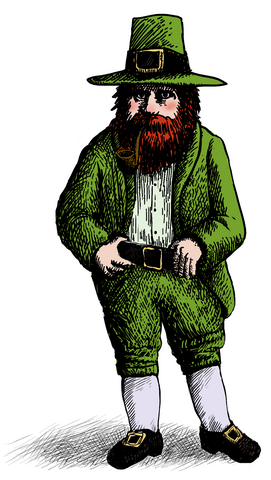
The Leprechaun is one of the most famous and mischievous figures in Irish folklore. These small, bearded men are often depicted wearing green coats and hats. They are known for being clever tricksters with a love for causing mischief. Leprechauns are also skilled shoemakers, and according to legend, their work brings them great wealth, which they hide away in pots of gold at the end of rainbows.
Despite their small size, leprechauns are tricky and not easily fooled. If someone captures a leprechaun, he may offer to reveal the location of his hidden treasure. Still, he usually finds a clever way to escape without giving up his gold. Many stories tell of people trying to outsmart a leprechaun only to trick themselves.
While they may not always be friendly, leprechauns play an important role as treasure guardians and tricksters in Irish folklore. They represent both the rewards and risks of greed and ambition. Over time, they have become one of the most recognizable symbols of Irish culture, often associated with good luck and St. Patrick’s Day celebrations.
For more information, please read my article on the Irish Leprechaun.
The Banshee
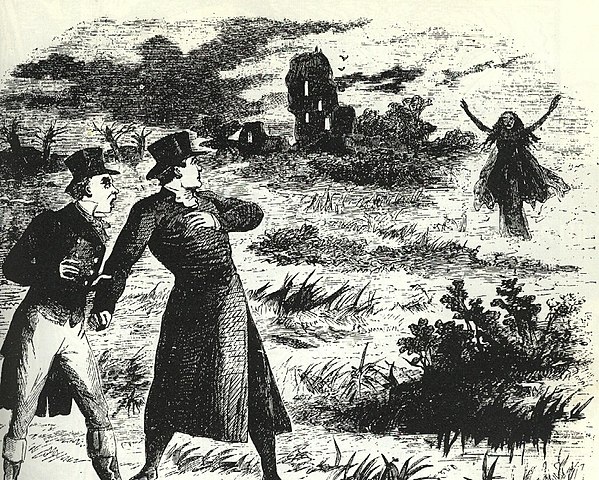
The Banshee is one of the eeriest figures in Irish folklore. It is a spirit whose mournful wail foretells the death of a family member. Described as a ghostly woman with long hair, she can appear in different forms—sometimes as a young woman, sometimes as an old hag—always dressed in white or grey. Her chilling cry, often compared to the sound of the wind or a sorrowful song, is said to be a warning that death is near for someone in the family.
The legend of the Banshee is deeply connected to themes of life, death, and the supernatural in Irish culture. While her presence is unsettling, she is not seen as an evil spirit. Instead, the Banshee is considered a messenger from the otherworld, helping to prepare families for the inevitable loss of a loved one. Some believe she is the spirit of a woman who died in sorrow, tied to a specific family and watching over them across generations.
In Irish culture, death has long been viewed as part of the natural cycle of life, and the Banshee represents the thin line between the world of the living and the world of the dead. Her cry serves as a reminder of mortality, and the mystery surrounding her highlights the strong connection between the supernatural and everyday life in Irish tradition. Even today, the Banshee remains a haunting symbol of loss, fate, and the unknown.
Please read my article on the Legend of the Banshee in Ireland for more information.
The Legend of the Dullahan
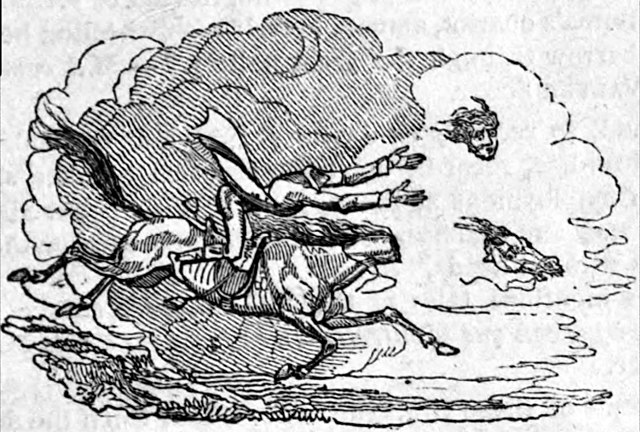
In Irish folklore, the Dullahan is a terrifying figure known as a headless horseman who rides through the night, bringing death to those he encounters. This ghostly figure is often depicted riding a black horse, carrying his head under one arm while his eyes, which can see for miles, scan the darkness for his next victim. The Dullahan is said to call out the name of the person whose death is near, and once he speaks their name, their fate is sealed.
Unlike some other spirits in Irish folklore, the Dullahan is not a warning but a direct messenger of death. His appearance is final and unavoidable. Some stories say that the Dullahan rides with a whip made from a human spine and that when he stops his horse, it means someone will die. People who see the Dullahan passing by often hide in fear, knowing that he brings nothing but doom.
This legend shares similarities with other headless horsemen in folklore, such as the Headless Horseman in American culture, famously featured in Washington Irving’s The Legend of Sleepy Hollow. Both figures are supernatural beings tied to death, riding through the night in search of their next victim. However, while the American version is often portrayed as seeking revenge, the Dullahan’s role is more akin to that of a grim reaper—delivering death without any personal motive.
In Irish folklore, the Dullahan is a powerful symbol of death and fate, reminding us that no one can escape their end. His eerie, headless figure represents the mystery of the unknown and the inevitability of death, much like similar figures in other cultures around the world.
Tragic Love and Transformation
The Children of Lir (Oisín and the Swan Children)
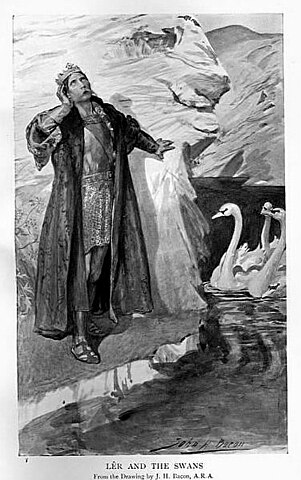
The story of The Children of Lir is one of the most famous and heart-wrenching tales in Irish folklore, filled with themes of loss, loyalty, and the enduring power of love. It tells the tragic fate of King Lir’s four children: Fionnuala, Aodh, and the twins Fiachra and Conn, who were loved dearly by their father. However, their lives were forever changed by the jealousy of their stepmother, Aoife.
Driven by envy of the children’s bond with their father, Aoife used magic to turn them into swans. She cursed them to live as swans for 900 years—300 years on Lake Derravaragh, 300 on the Sea of Moyle, and 300 on the waters of Inis Glora. Though they were transformed, the children kept their human voices and remained loyal to each other throughout their long, painful exile.
The children of Lir faced countless hardships, but they remained united, singing beautiful, sorrowful songs and staying true to their love for one another. The only thing that kept them going through their centuries of suffering was the hope that the curse would be lifted one day.
After 900 years, when Christianity spread to Ireland, the swans heard the ringing of church bells. With the arrival of St. Patrick, the curse was finally broken, and the children were transformed back into humans. Sadly, they were no longer young—they had aged all those years at once and soon passed away. However, they were baptized before their deaths, ensuring their souls would find peace.
Like many Irish legends, this story is filled with deep emotion and meaningful themes. It speaks of the pain of loss, the power of loyalty between family members, and how love endures, even through great suffering. The tale of the Children of Lir has been passed down through generations as a reminder that love and family bonds can survive even the harshest curses.
Read the full story of The Children of Lír.
Wisdom and Knowledge
The Story of the Salmon of Knowledge
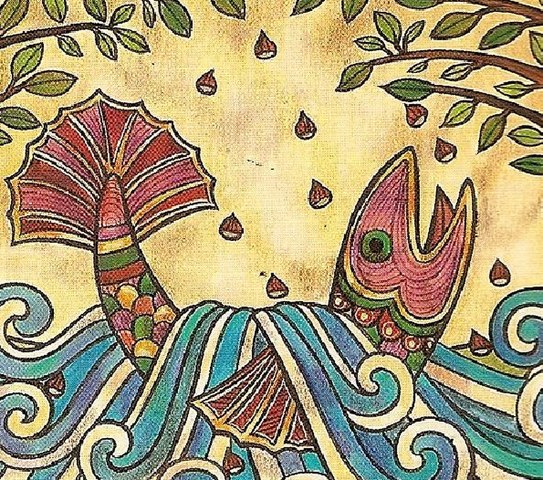
The Salmon of Knowledge is a well-known myth in Irish folklore, symbolizing the pursuit of wisdom. According to legend, this magical fish had gained all the world’s knowledge by eating the sacred hazelnuts that fell into a river. It was said that whoever caught and ate the salmon would gain all its wisdom.
The hero Fionn mac Cumhaill first encountered the Salmon of Knowledge as a young boy when he was in the care of a wise poet named Finnegas, who had been trying to catch the fish for years. One day, Finnegas finally caught the salmon and asked Fionn to cook it for him, but warned him not to eat any of it. However, while cooking the fish, Fionn accidentally burned his thumb and, without thinking, put it in his mouth. In that moment, all the knowledge of the salmon was transferred to Fionn.
From that day on, Fionn was known for his incredible wisdom and became one of Irish folklore’s greatest leaders and warriors. Whenever he needed insight, he would place his thumb in his mouth, and the knowledge would come to him.
The story of the Salmon of Knowledge highlights the value of wisdom in Irish culture and the belief that true power comes from knowledge rather than just physical strength. It also reflects the idea that wisdom is something to be sought after and cherished, a theme that runs through many Irish myths and legends.
Read the full story of The Salmon of Knowledge.
Fionn mac Cumhaill (Finn McCool)
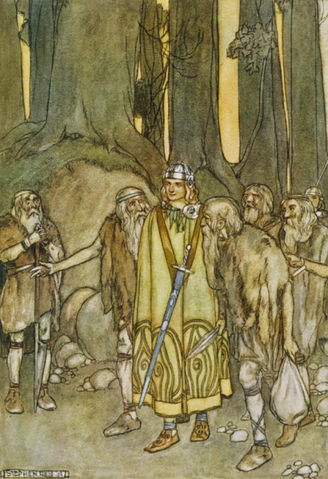
Fionn mac Cumhaill (often anglicized as Finn McCool) is one of the most famous heroes in Irish folklore. A legendary warrior and leader of the Fianna, a band of skilled warriors, Fionn was known for his bravery, wisdom, and supernatural abilities. His stories are filled with incredible adventures, making him a beloved figure in Irish lore.
Fionn gained his wisdom through the Salmon of Knowledge story, where he accidentally tasted the magical salmon and acquired all the world’s knowledge. This wisdom helped him lead the Fianna in many battles and adventures, always outsmarting his enemies.
He is also linked to the legend of The Giant’s Causeway, where he is said to have built the massive stone pathway between Ireland and Scotland during a feud with a Scottish giant. Fionn’s tales blend action, intelligence, and mythical strength, making him one of Ireland’s most enduring folklore heroes.
Heroic Sacrifice
The Death of Cú Chulainn
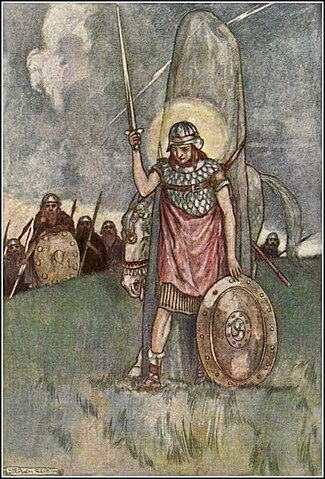
Cú Chulainn, one of the greatest heroes of Irish lore, met his end in a way that reflected his life—full of honour and sacrifice. In his final battle, Cú Chulainn fought bravely against overwhelming odds. Even though he was mortally wounded, he refused to die lying down. Determined to face death on his own terms, he tied himself to a standing stone so he could die upright, still holding his weapon.
Even in death, Cú Chulainn’s enemies feared him, believing he was still alive as he remained standing. Only when a raven landed on his shoulder, a symbol of death, they knew he had finally passed.
Cú Chulainn’s death is a powerful story of a warrior’s commitment to honour, bravery, and fighting until the very end. It reflects the warrior code in Irish culture, where dying in battle was seen as the ultimate act of courage and sacrifice. His heroic death has made him a timeless symbol of strength and loyalty, remembered for his unwavering determination to protect his land and people.
Read the full story of The Death of Cú Chulainn.
Irish Folklore in Irish Culture
Irish folklore is a rich and timeless treasure, with stories that have been passed down through generations, shaping Ireland’s identity and heritage. From the heroic feats of Cú Chulainn and Fionn mac Cumhaill to the haunting cries of the Banshee, these legends offer a glimpse into the ancient world of Irish culture, where bravery, loyalty, love, and the supernatural were deeply intertwined.
These myths continue to captivate us today because they are entertaining and contain universal lessons about life, death, honour, and the human spirit. Whether it’s the pursuit of wisdom, the strength of family bonds, or the courage to face inevitable challenges, the themes in these tales still resonate in the modern world.
Irish folklore invites us to reflect on our own lives and the timeless truths these stories hold. I encourage you to explore further, dive deeper into the magic of these ancient tales, and discover their enduring power to inspire, teach, and connect us to the past.
